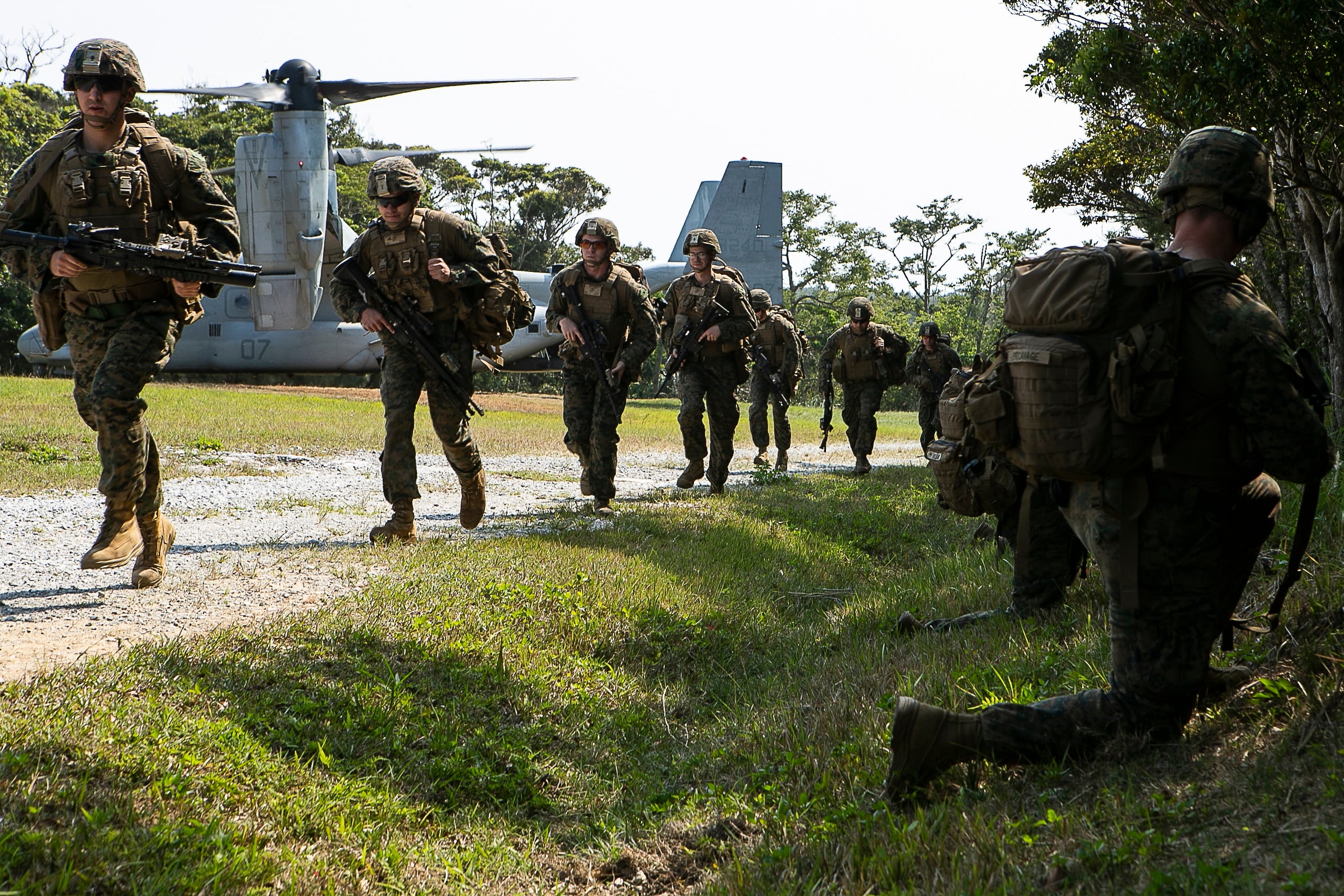On Thursday the Marine Corps launched its first ever Marine littoral regiment ― a new unit that already may have the U.S.’s near-peer militaries worried.
“Adversaries do not like this concept at all,” Gen. Eric Smith, the assistant commandant of the Marine Corps, told reporters at a briefing on Monday. “They don’t like the fact that units are highly mobile, that they have a low signature, and that the adversary doesn’t know where these things are.”
The new 3rd Marine Littoral Regiment will be headquartered out of Marine Corps Base Hawaii and is based around the current 3rd Marine Regiment.
Designed based on potentially thousands of hours of war games, the new unit is set to the be the flagship formation seeing the Corps enter the post Global War on Terror era.
RELATED

But not everyone is sold on the new concept or buys the Marine Corps’ total confidence of the fear these units may strike in potential enemies.
“It was as if they had entered the mind of our opponents,” Mark Cancian, a retired Marine colonel and current senior adviser at the Center for Strategic and International Studies in Washington, told Marine Corps Times.
“I think it would be more accurate to say, ‘In our war games the Chinese player finds it very difficult to track down these platoons,” Cancian said.
Staying undetected
The new littoral regiment will be made up of three elements: a littoral combat team ― consisting of one infantry battalion and one missile battery potentially capable of sinking ships, a littoral anti-air battalion and a combat logistics battalion.
The littoral combat team will be capable of deploying in plus-sized platoon elements ranging from 75 to more than 100 Marines depending on the mission, Smith told reporters.
The Marine Corps envisions using those teams to create and occupy expeditionary advanced bases widely dispersed across the littorals of any future fight.
Those Marines will be able to launch cyberattacks, spot targets and possibly even sink or destroy large enemy ships.
Despite the firepower, the Corps hopes the small size and the dispersed nature of the unit will keep it undetected from enemy sensors for an extended period of time, while the unit’s mobility will allow it to run away unscathed once the enemy does stumble upon it.
Eventually the Corps will have three littoral regiments, all stationed within III Marine Expeditionary Force, Smith said on Monday.
The Marine Corps has been experimenting with the formations and tactics the regiment will implore since the 2020 release of Marine Corps Commandant Gen. David Berger’s Force Design 2030.
Smith said it was those tests that have shown how worried the enemy is about the new Marine Corps formation.
“We’re talking about an organization of 75 Marines … that are inherently mobile and have capabilities to shut down a network to strike an enemy capital warship and then fade away and move again,” Smith said. “Adversaries hate that because they don’t have effective control over the adversary’s plan.”
Smith said he could not give details on how that information was gathered or assessed because it was classified.
‘It’s all very sensible’
The Marine Corps’ hesitancy to publicly provide data about Force Design 2030 tests has caused some to be skeptical of the Corps’ assertion that potential adversaries are shaking in their boots.
“The Marine Corps states that the war games support their concept and maybe they do, but it is not evident,” Cancian said.
But not all are as pessimistic.
Dakota Wood, a retired Marine and current senior research fellow for the conservative Heritage Foundation think tank, told Marine Corps Times, “It’s not 100% guaranteed, but I think there’s been a lot of intellectual effort put into it.”
“I think these newly derived solutions will be applicable against a range of tactical scenarios,” Wood said.
Cancian agrees that the Marine Corps needs to modernize and shift its focus toward near-peer threats like China.
But the retired Marine pointed out that this was the first major introduction in Marine Corps war fighting concepts during peace since helicopters were introduced between World War II and the Korean War.
While the Corps has gone through significant changes since the late 1940s, most of those changes came out of weaknesses exposed on battlefields and almost immediately were tested in the fires of war.
By contrast, Force Design 2030 has been developed and tested through simulations and field exercises that allow the Marine Corps to make its own assumptions about the enemy’s capabilities.
“It’s very good that the Marine Corps is conducting them,” Cancian said. “It’s all very sensible, but nobody on the outside has any visibility into them.”
Wood acknowledged it is possible for confirmation bias to make its way into the Marine Corps analysis process.
He noted that it is important for the Marine Corps and outside observers to constantly question these studies and experiments to ensure they hold up. But from his vantage point, the Marine Corps seems to be heading in the right direction.
Though he did not provide many details, Smith said the Corps is constantly listening to small unit leaders running Marines through these exercises to figure out what is working and what is not.
“We are constantly adjusting the exact size of an infantry battalion, the exact number of missiles a unit needs to carry so that it matches our logistics capability, the exact signature that they will put out,” Smith said.
“Those things are constantly in motion, but our cardinal direction has not changed at all and every piece of analysis that we have comes back and says, ‘The adversaries do not like what you’re doing at all,’” Smith said.





